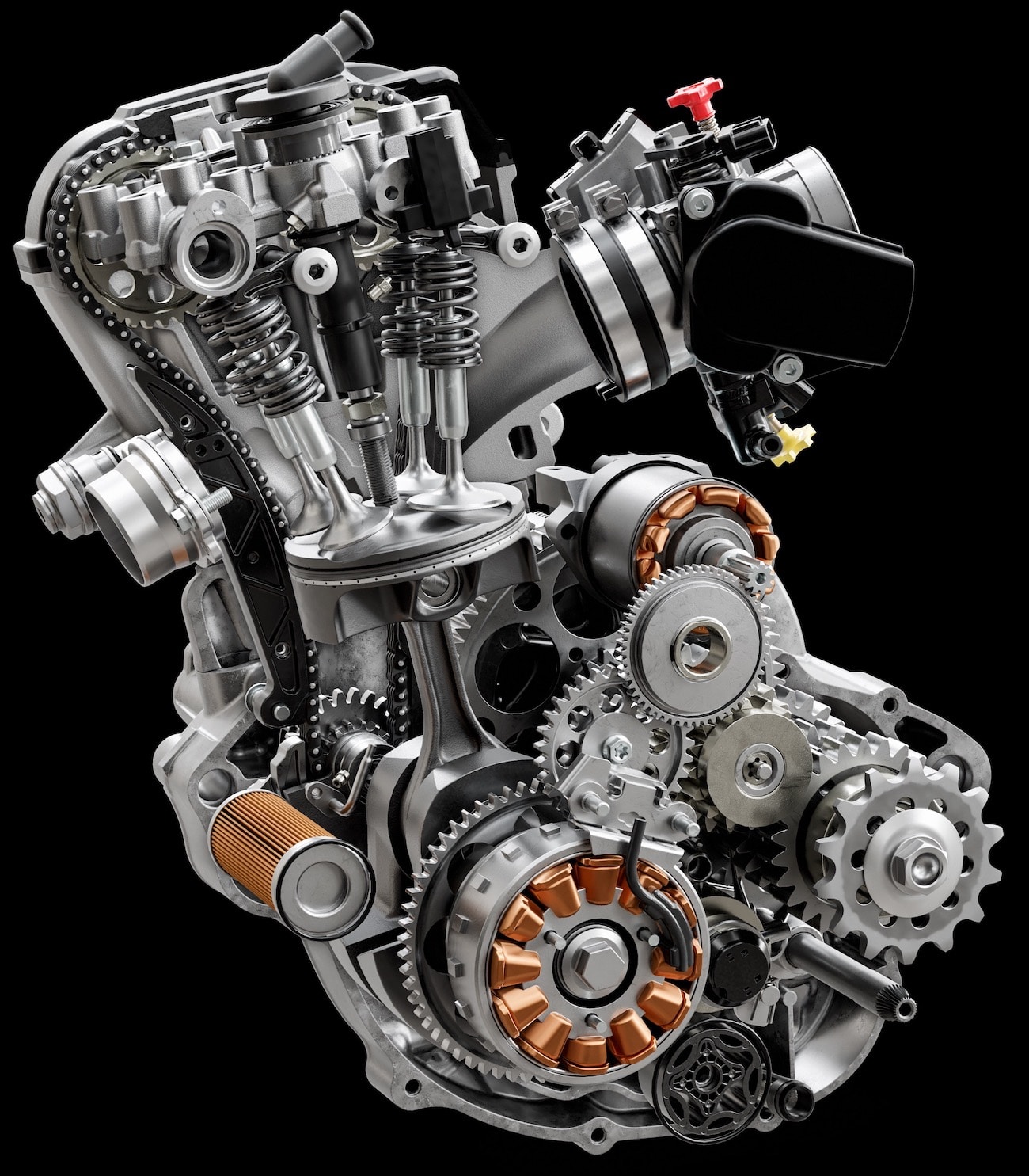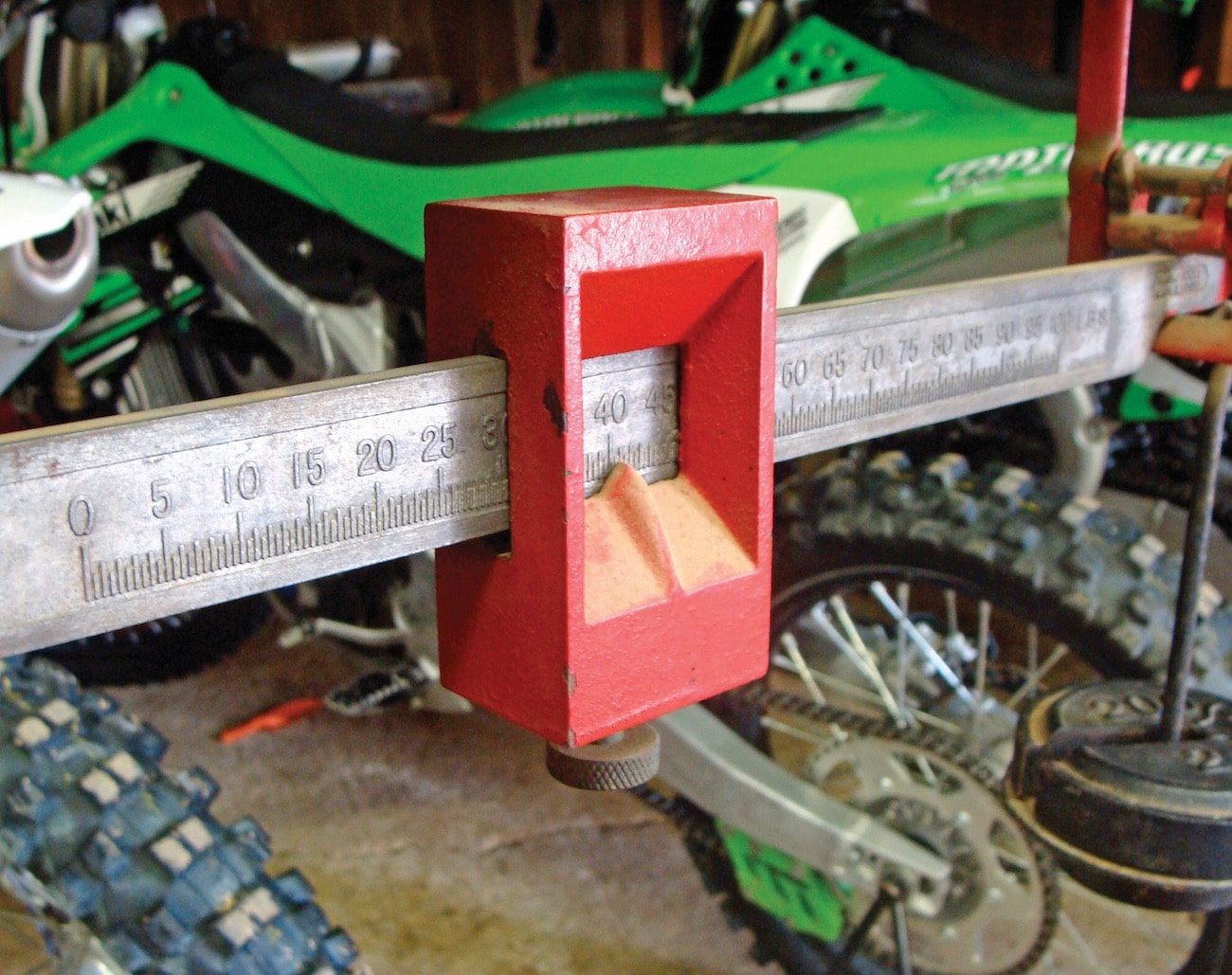TEN THINGS ABOUT MOTORCYCLE MASS & IT’S EFFECTS ON YOUR BIKE
(1) Motorcycle mass. There are points on a racetrack where mass plays an insignificant role, but in acceleration, braking, suspension, yaw, pitch, roll and fatigue (both on the bike and body), weight really does matter.
(2) Unsprung weight. Unsprung weight includes the parts of a motorcycle that move up and down with the suspension over every bump on the track. The unsprung weight on a motorcycle involves the tires, tubes, rotors, hubs, spokes, rims, sprockets, axles, chain, chain guide, rim locks, fork legs, shock, brake calipers, brake pads and any mud or dirt that sticks to those parts.
(3) Sprung weight. The complete chassis, including all the parts that are suspended above the suspension’s springs, is considered sprung weight. That includes the frame, engine, plastic, controls, saddle, upper fork tubes, shock body, and, strangely enough, half of the weight of the fork springs and shock spring. It’s called “sprung weight” because springs are used to hold it up and to isolate it from the bumps that the wheels hit.
(4) Semi-sprung weight. Semi-sprung parts are attached to the wheel on one end and to a sprung component on the other. The front forks, for example, connect the front wheel to the chassis. The chain going from the countershaft sprocket to the rear wheel is another semi-sprung part. The list also includes the rear shock, swingarm and linkage.
(5) Testing unsprung weight’s effects. Stick your arms straight out and rapidly lower them to your sides, then raise them back up again. Then grab a 10-pound weight in each hand and repeat. Feel the difference? It takes serious effort to imitate the up-and-down motion of a bird with weight on each arm. Your arms move slower and more sluggishly when changing direction. Additionally, the strain of holding the weights can be felt in your shoulders. There is no doubt that you could move your arms quicker and with less stress if you didn’t have any extra weight attached to them. Now, imagine that your arms are your bike’s swingarm. The 10-pound weight mimics the mass of your bike’s wheels. Your arm is the swingarm, your shoulder socket is the swingarm pivot and your muscles are the shock absorbers. The increased muscle strain and sluggish reaction time that your body feels can be extrapolated over to the mechanical parts of your bike’s suspension. Extra weight on moving parts has a negative effect on the performance of your suspension.
(6) Rotating mass. Much like spinning a top, rotating mass doesn’t want to stop after you start it. If you touch a spinning top while it’s going, it tips over, and then bounces back up and keeps spinning. The heavier the top, the harder it is to stop it from spinning. The spinning-top analogy can be transferred to a motorcycle. The heavier the rotating mass, the more your motorcycle will want to stand up straight. This effect will work against you to pull your motorcycle out of a rut when the bike is leaned over. Think of all the things on a motorcycle that rotating, not just the wheels, but the cams, crank, clutch and flywheel weight. Additionally, rotating mass is roughly three times harder to accelerate than sprung weight. If a bike could drop 10 pounds of wheel weight (tires, tubes, hubs, spokes, sprockets, bolts) it would equate to a reduction of almost 120 pounds of sprung weight.
(7) Centralizing mass. Moving weight to the center of your motorcycle helps balance the bike and make it feel more nimble. Centralized weight has less effect on the performance of the bike than the same amount of weight when it is farther away. Yamaha moved the cams down in its 2020 YZ450F engine to move the rotating mass of the cams closer together and closer to the center of the engine. The result was an improved ability to lean the bike over in corners, allowing for faster and smoother turns.
(8) Wheels. It is the gyroscopic effect of the wheels that keeps your motorcycle straight while in the air. For example, if you’re doing a whip and you give it more gas mid-air, and the faster spinning rear wheel will straighten you out. If your front end is too low in the air, give it more gas again to level the bike out. If your front end is too high, pull in the clutch and hit the rear brake to drop it down. The heavier your wheels are, the more you will be able to notice this gyro effect.
(9) Rider size. The height and weight of the rider will affect how the bike handles. A taller, heavier rider will have a hard time leaning the bike over in a corner for the same reason a heavier motorcycle won’t be able to lean over as easily.
(10) Parts diet. When you put your bike on a weight-reduction plan, it is important that you remember the 6-to-1 rule. It is said that a 1-pound reduction in unsprung weight is equal to a 6-pound reduction in sprung weight. Thus, if you’re going to spend money on lightweight hardware, concentrate on unsprung weight.








Comments are closed.